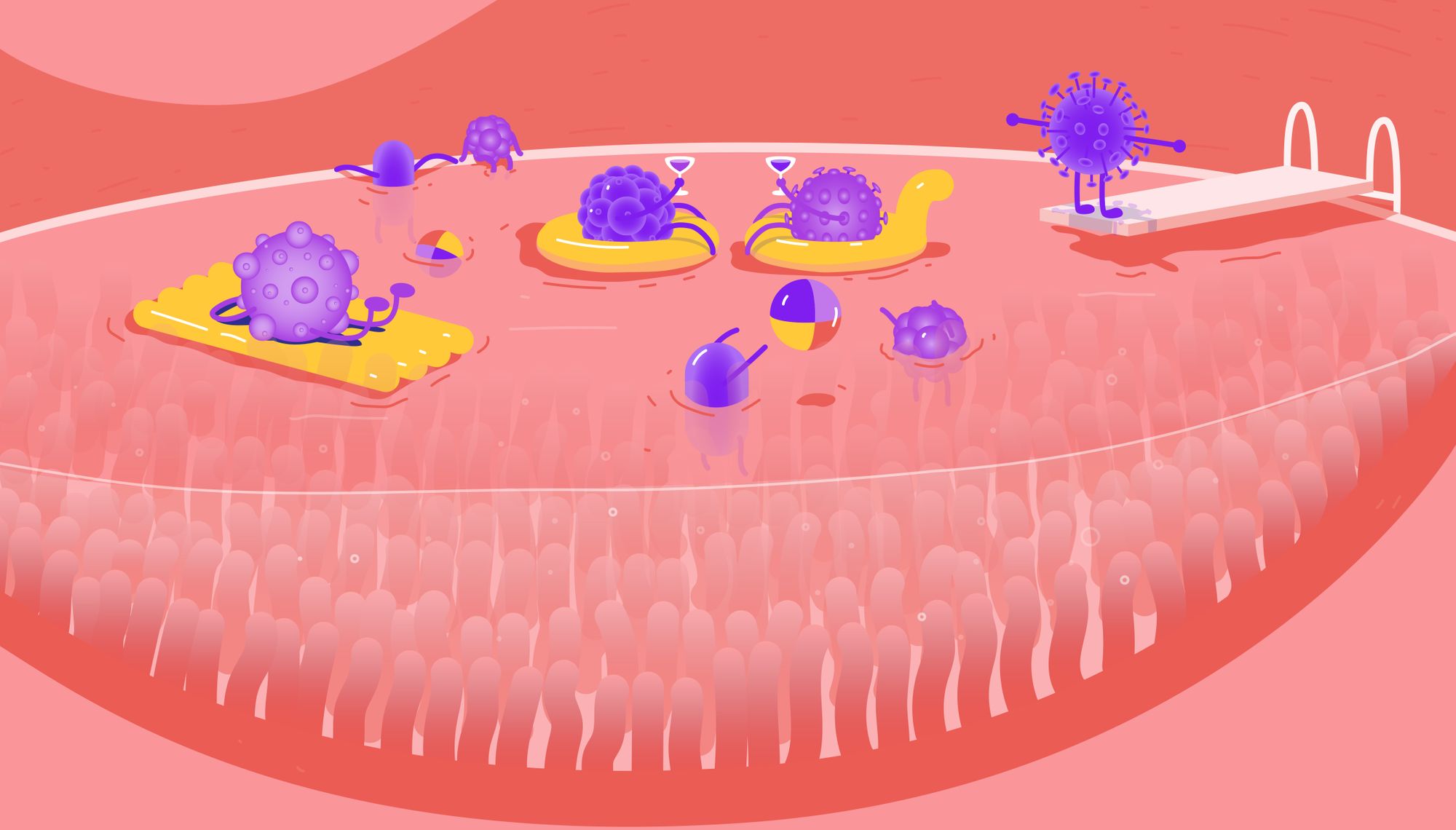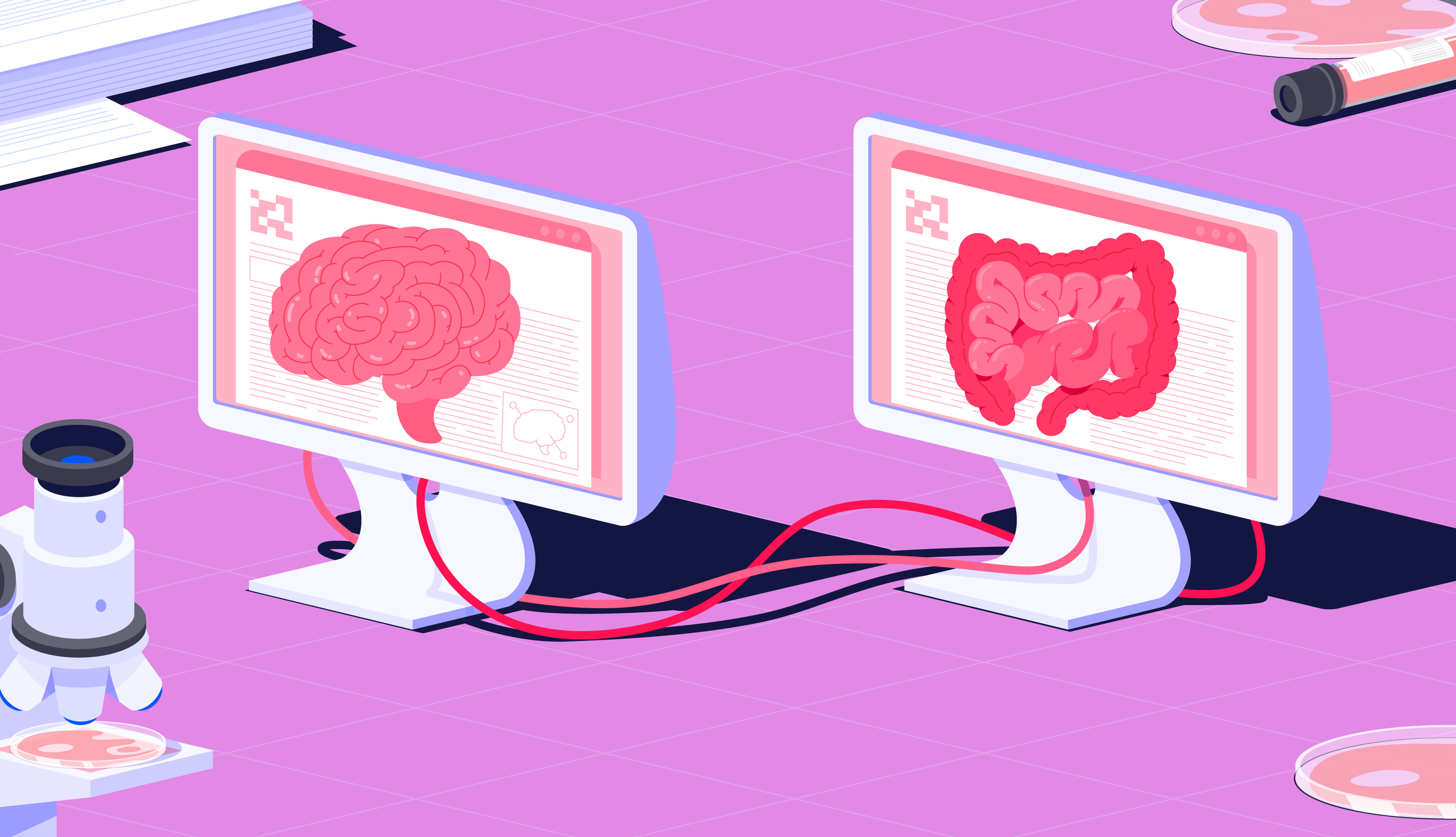Butyrate can slow down ageing by encouraging growth in the brain and gut. Poor diet could disrupt this process and increase the risk of cognitive decline.
Study findings: Researchers transplanted the gut microbiota from old mice into young germ-free mice, which unexpectedly, showed increased production of brain cells in a region called the hippocampus, as well as increased intestinal growth. This indicates that, in old age, the gut promotes the health and growth of the brain and the intestines in mice, and might also do so in humans.
Why it matters: Ageing results in cognitive decline and is a major risk factor for neurodegenerative disease. The number of older persons is expected to double by 2050 to reach 2.1 billion, placing a growing burden on families and nations. Understanding what role the gut microbiome plays in maintaining brain health can advance the search for preventative measures that target ageing and its consequences.
The final word: The study’s findings reveal a link between the gut microbiome and brain health in later years. Since diet and lifestyle can influence the ecosystem of bacteria in our colon, these factors might also keep the brain healthier for longer. However, as the authors noted, long-term studies are needed to better understand this process.
What is the hippocampus?
As we age, the hippocampus allows the brain to go about creating new memories by actively growing new cells, aided by a healthy lifestyle.
For a long time, scientists believed that the brain didn’t grow any brain cells during our lifetime because they thought this organ stopped developing once we left the womb. Now we know this to be incorrect.
This process, called neurogenesis (the production of new neurons), is only known to happen in part of the human brain: the hippocampus. Located near the brain stem, it is the only area in which new neurons can grow after birth. Part of the limbic system, it controls learning and memory, as well as spatial navigation, amongst other things.
The hippocampus supports the creation of new, conscious memories that can be verbalised, particularly recollections of a specific event in time and place. It is the earliest and most severely affected structure in several neurological disorders such as Alzheimer's disease and epilepsy.
The hippocampus shrinks as we get older, but we are also able to grow new cells in the hippocampus that connect to other parts of the brain. About 700 neurons are thought to grow in the hippocampus throughout our lifetime (post-birth).
Growth of these neurons in old age is associated with better pattern recognition and cognitive skills. On the other hand, elderly people with decreased neurogenesis have cognitive skills poorer than average for their age.
Exercise, eating a healthy diet, and sex all improve this neurogenesis in male rats, and may do so for humans as well. On the other hand, ageing, drug addiction, depression, and high-fat, high-sugar diets are known to decrease neurogenesis.
| Factor | Effect on neurogenesis |
|---|---|
| Exercise | ⇧ |
| Fiber-rich healthy diet | ⇧ |
| Sexual intercouse | ⇧ |
| Ageing | ⬇ |
| Drug addiction | ⬇ |
| Depression | ⬇ |
| High-fat, high-sugar diet | ⬇ |
How does the gut promote neurogenesis?
Beneficial bacteria in the gut, when transferred from old to young mice, helped encourage the growth of new neurons in the hippocampus.
Researchers transplanted the gut and skin microbiota of healthy old donor mice into young recipient germ-free mice (with no microbiome) through a faecal transplant and skin-to-skin contact.
Unexpectedly, young mice that had received transplants from old mice showed increased production of new cells in the hippocampus. Scientists searched for, and found, increased levels of brain-derived neurotrophic factor (BDNF) in these mice, which encouraged the growth of new neurons.
Interestingly, the microbiota of these old mice had lower levels of two types of bacteria, Akkermansia and Alistipes. In particular, Akkermansia is a microbe associated with lean body weight that helps maintain gut lining health by stimulating the production of mucins that thicken this protective barrier.
☝️FACT☝️Akkermansia are more abundant in centenarians (people over 100 years old) compared to the average elderly human population.
Old age, longevity, and organ functions
Bacteria from old mice also aided absorption of nutrients in the gut and produced a compound called butyrate, which encouraged neurogenesis.
The gut
In addition to new hippocampal neurons, mice that had received the gut microbiota of old donor mice gained a larger total intestinal surface area, which essentially means their guts grew in size.
This is relevant because this organ is responsible for nutrient absorption, and more surface area means increased absorptive potential. The authors identified this as another key difference between old and young mice in general.
The liver
The livers of old and young mice also differed. This organ is critical for health because it receives blood from the digestive tract, filters the blood to remove waste products, synthesises nutrients, and passes the nutrient-rich blood to the rest of the body.
In this study, old mice had developed a stress resistance mechanism (the production of butyrate) against the metabolic insults of ageing, which enhanced their longevity. According to this study, this signature could be transferred from old mice to young, germ-free mice by a gut microbiota transplant.
Butyrate for longevity
In mice, the signature of their stress resistance mechanism was butyrate, a short-chain fatty acid produced by beneficial bacteria in the microbiome. These bacteria were found enriched in mice that received microbiota from old donors. Well-known butyrate-producing bacteria include:
- Anaerostipes
- Eubacterium
- Faecalibacterium
- Gemminger
- Roseburia
This beneficial relationship has been shown to help in the absorption of electrolytes in the colon (large intestine), and a disruption of this relationship has been shown to cause damage and inflammation in the intestinal lining (mucosa), which has been linked with obesity and type II diabetes.
However, while this butyrate signature was transferable from old to young mice, no changes were seen when the microbiome was transplanted from old mice to other old mice.
Foods to increase butyrate production by gut microbes
| Barley | Oats | Rye |
| Bran | Whole grains | Mushrooms |
| Apples | Citrus | Berries | Onions | Garlic |
Butyrate also increased the levels of fibroblast growth factor 21 (FGF21), an anti-ageing signaling protein, with a positive knock-on effect on other longevity signalling proteins.
As FGF21 is able to cross from the blood system into the brain, the authors postulated that this might explain how butyrate activates BDNF – the factor that encourages the growth of new neurons. This builds on the findings of many previous studies which established butyrate as a BDNF regulator.
The changes begin in the gut
Butyrate alone is responsible for promoting longevity in the brain and gut. In order to show that the chain of events started with the gut, the researchers gave butyrate orally to young germ-free mice without any transplant.
This recreated the effect of a gut microbiota transplant from old donor mice to young mice, proving butyrate’s essential role as a control switch that is turned on by age. This switch promotes longevity in the brain and gut.
☝️FACT☝️ Neurogenesis continues to occur in centenarians, and their healthy diets are thought to contribute to their longevity.
The bottom line
Fibre is our friend in the fight against gut-mediated brain ageing, and may help us stay happier and more productive for longer.
This study underscores how connected every system in our body is, adding more fuel to the argument that exercise and a healthy diet are essential for the body and mind.
Indeed, a high-fat, high-carbohydrate, and low-fibre diet may impair butyrate production. But that's not all, it is also linked to serious metabolic diseases, including obesity, which can have an adverse affect on cognitive function.
On the other hand, a microbiome-friendly diet – that is also good for the body – contains prebiotic fibers found in plant-based foods that can nourish beneficial gut bacteria and stimulate the production of butyrate, as well as other important substances.
In addition to prebiotics like vegetables, fruits, pulses, and whole grains, exercise is also known to encourage gut microbial diversity, and stimulate BDNF expression that is required for neurogenesis and brain health in later years.
☝️TIP☝️ The Atlas Microbiome Test can evaluate the butyrate synthesis potential based on your microbiota composition.
- Kendu P et al., Neurogenesis and prolongevity signaling in young germ-free mice transplanted with the gut microbiota of old mice, 2019
- Knierim JJ, The hippocampus, 2017
- Anand KS & Dhikhav V, Hippocampus in health and disease: An overview, 2012
- Leuner B et al., Sexual Experience Promotes Adult Neurogenesis in the Hippocampus Despite an Initial Elevation in Stress Hormones, 2010
- Stangl D & Thuret S, Impact of diet on adult hippocampal neurogenesis, 2009
- Nokia MS et al., Physical exercise increases adult hippocampal neurogenesis in male rats provided it is aerobic and sustained, 2016
- Chevalier C et al., Gut Microbiota Orchestrates Energy Homeostasis during Cold, 2015
- Poulouse SM et al., Nutritional Factors Affecting Adult Neurogenesis and Cognitive Function, 2017



















